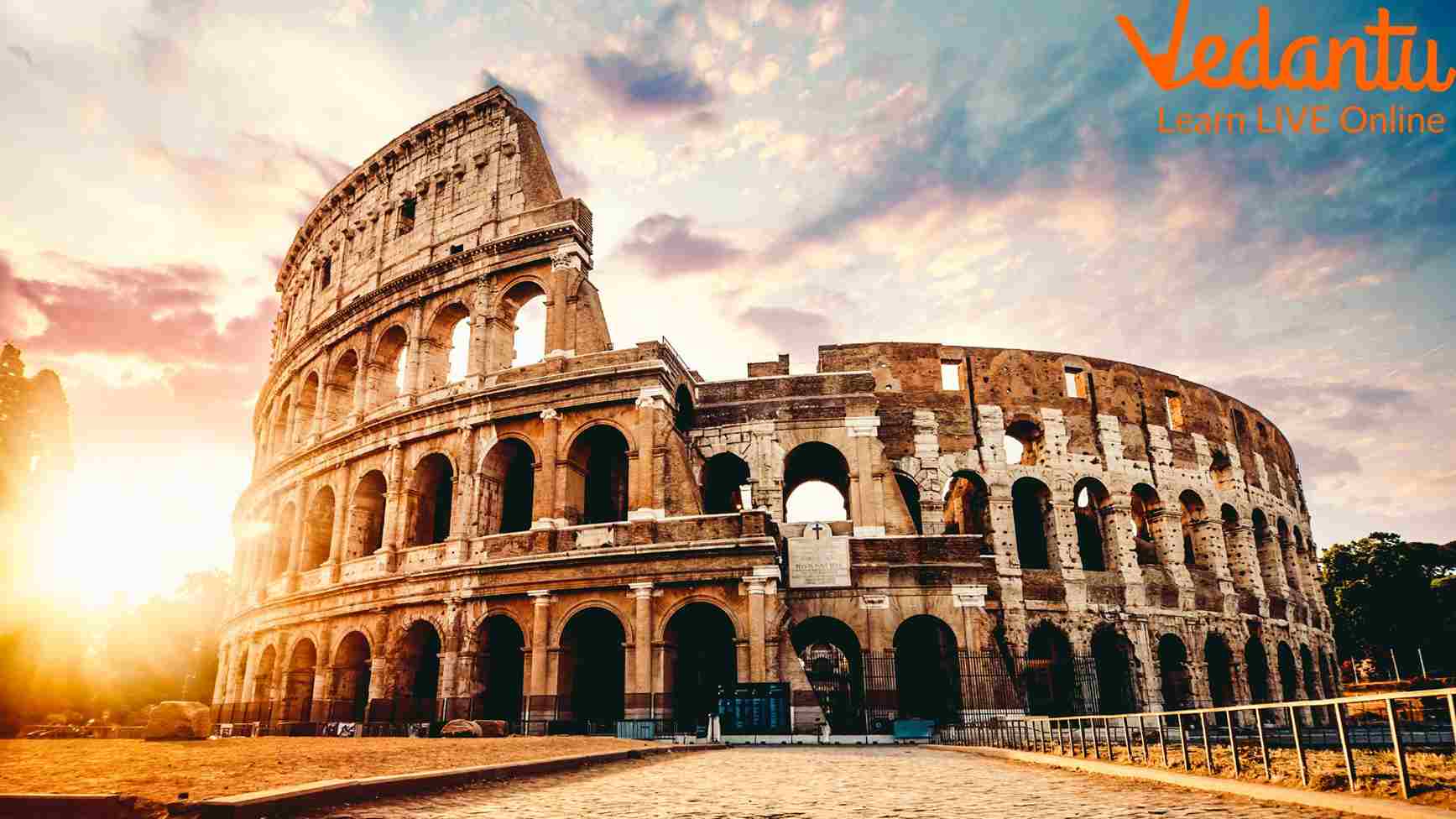Curious Secrets and History of Colosseum
Imagine a stadium made of stones and wood where more than 60,000 people can sit built at least 2000 years ago! Yes! You have guessed it right. We are talking about the historical Colosseum of Rome. This historical architecture has unravelled so much history over the years.
The gladiators used to showcase their valour and glory in this historical arena. It was the entertainment place for the royals and commons. This is a landmark development in world history where the rowdy crowds supported their favourite warriors showing their fighting skills. It still stands the test of time and mesmerises tourists across the world.
What is the Colosseum of Rome?
The Roman Colosseum is one of the largest amphitheatres in the world. It is no doubt the glorifying symbol of the epitome of the Roman Empire reached 2000 years ago. This is the arena where the common and royals used to get entertained by the gladiatorial fights. It is a sign of survival standing strong even to this date.
This remarkable Roman architecture can hold more than 60,000 people. It is a feat that still manages the modern architects to think how glorifying the planning and execution were back then.
There is a saying that depicts the Roman will stand till the Colosseum stands and will fall when it falls. To this day, we see the ruins of this marvellous symbol of power and valour standing its ground and amazing all with its elegant view.
The History of the Colosseum
When Nero, the Roman Emperor, succumbed to his own decadence in 68 AD, civil wars started to prevail in Rome. There was anarchy everywhere. Three different royal entities attempted significantly to take the throne in those turbulent years for the commons.
It was Vespasian the Flavian, who took over the throne and made so many remarkable changes. Due to him, the lavish and posh behaviour and lifestyle of the Roman courtiers were trimmed down significantly. He also ensured a better life for the commoners suffering from the years-long civil wars. With his benevolent actions, the Roman emperor built a huge amphitheatre at the same place where Emperor Nero wanted to build a huge palace for himself. Hence, the Colosseum in ancient Rome replaced the Domus Aurea, the dream of Nero, in 72 AD.
Despite his ventures, Vespasian was unable to witness the opening of this theatre. He died a year before and the amphitheatre was inaugurated by his son Titus. To his honour, Titus organised games and thrilling sports for 100 days consecutively.

The Roman Colosseum
The Golden Era of the Colosseum
Since the advent of this amphitheatre, it has become a glorying symbol of the golden era of the Roman Empire. It continued from the 1st Century to the 5th Century. Slowly, the change of taste among the public slowed down its entertainment frequency.
This is when the cruel and horrifying display of power was stopped in the 6th Century AD. The amphitheatre stood there strong for straight 500 years but received immense damage from the regular events conducted by the Roman emperors. The other reasons for the damage are earthquakes and lightning strikes, as reported by historians. This was the strong image of the Colosseum in its prime.
The Era of Declination of Colosseum
With the advent of the mediaeval period, significant changes were noticed after the 6th Century AD. A chapel was built near it but the religious changes never caught the support of the royals and the people. This glorious arena was still basking under the glow of valour and strength.
The seating area was once converted into a cemetery, workshops and housing quarters in the 12th Century. The historical anecdotes revealed that people used to rent this place to live and work till the 13th Century. It also served as a castle for the Frangipani Family of the Roman Empire in the 13th Century.
A devastating earthquake hit in 1349 resulting in the fall of the southern side of this colosseum and sealing its fate. The public also changed their tastes from gory entertainment and this amphitheatre tended to lose popularity.
The public abandoned it and started using the rocks and other structural materials to build important projects. You will be surprised to know that the material of the original Colosseum was used to construct Palazzo Venezia, St. John Lateran, and St. Peter’s Basilica.
Later, in the 16th to 17th Century, it was thought to be converted into a factory to make wool. In the 18th Century, Pope Benedict XIV declared it a sacred site to commemorate the martyred Christians.
The Modern Colosseum
In the 19th Century, excavation was started by archaeologists to find out its structure. The complex was exposed with tunnels and backstage underneath the Colosseum. The floor has doors that can open and present animals or speakers out of thin air. This wooden floor had to be removed as it received a serious blow from the weather conditions.
The old floor was made of volcanic rocks, wood, concrete, and limestone in 80 AD. The new floor is made of wood and carbon fibre and is around 3000 square metres in area. The new floor will be complete by the end of 2023. This is the modern scenario of the rich Roman Colosseum history.
The Symbol of Heritage
The Colosseum is the symbol of architecture, valour, power, and advancement of the Roman Empire. Its presence surely glorifies how remarkable the time was when the Romans mastered the art of colossal architecture.
Even if it was hit by weather, lightning, and earthquakes, it still stands tall and attracts a lot of tourists across the world. It is now a UNESCO World Heritage Site and a landmark in World history.







